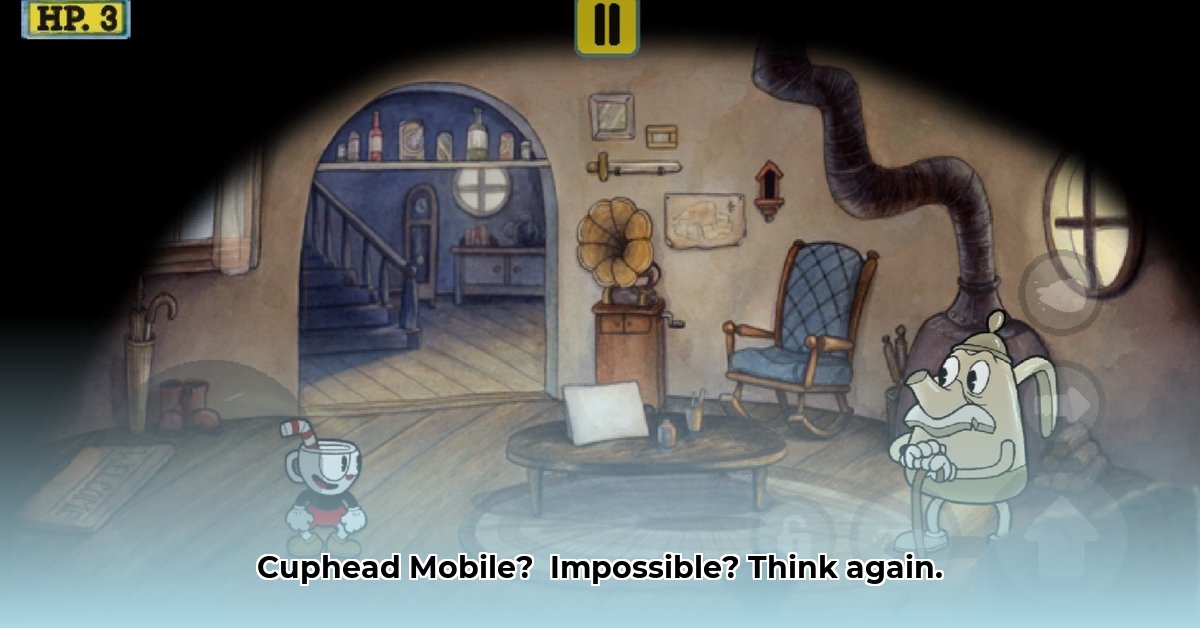
Two ambitious fan projects on GameJolt are attempting to bring the distinctive charm and challenging gameplay of Cuphead to mobile platforms. This comparative analysis examines these endeavors, highlighting their technical approaches, scope, and potential impact. Both projects aim to recreate the game's unique art style and notoriously difficult boss battles, but their methods and ambitions differ significantly.
Technical Approaches: A Tale of Two Engines
One project, simply titled "Cuphead Mobile," remains largely secretive about its technical specifications. Details regarding the game engine, development tools, and target mobile platforms remain undisclosed. In contrast, "Project Cuphead," developed by SuperPocketStudios, embraces transparency, utilizing GDevelop (a user-friendly, no-code/low-code game-making tool) and initially targeting Android devices. This difference in openness significantly impacts our ability to assess each project's strengths and weaknesses.
"Project Cuphead": The GDevelop Advantage
"Project Cuphead's" use of GDevelop presents both advantages and potential limitations. The engine's user-friendly nature likely streamlines the development process, potentially facilitating cross-device compatibility. However, crucial questions remain unanswered: Will the touchscreen controls feel intuitive? How will the game perform on diverse mobile hardware? These unknowns are inherently associated with the chosen development platform.
"Cuphead Mobile": An Enigmatic Undertaking
The opaque nature of "Cuphead Mobile" presents a challenge for objective analysis. The lack of information regarding engine choice, optimization strategies, and performance metrics leaves its success largely speculative. While it promises a complete Cuphead experience, the lack of detail introduces significant uncertainty. Does this secrecy suggest a more advanced, potentially more resource-intensive approach? Or does it mask potential development hurdles?
Scope and Goals: A Matter of Scale
Ambition significantly differentiates these projects. "Cuphead Mobile" aims for a complete recreation of the original game, encompassing the entire world map, weaponry, and boss battles. "Project Cuphead," conversely, appears to adopt a more measured approach, its scope possibly limited to specific game segments or a phased release strategy. The overall scale of "Project Cuphead" remains unclear, leaving room for future expansion.
Stakeholder Impact: Short-Term and Long-Term Perspectives
The following table outlines potential short-term (0-1 year) and long-term (3-5 years) impacts on various stakeholders:
| Stakeholder | Short-Term (0-1 Year) | Long-Term (3-5 Years) |
|---|---|---|
| Fan Developers | Gameplay refinement, graphical improvements, player feedback analysis. | Game completion, potential monetization strategies, exploration of partnerships. |
| Mobile Gamers | Game testing, feedback provision, early access opportunities. | Continued demand for high-quality mobile ports of popular titles will drive engagement. |
| Studio MDHR | Copyright assessment, quality evaluation, legal monitoring. | Consideration of an official mobile port or potential licensing agreements. |
Legal and Monetization Considerations
Both projects must navigate the complex legal landscape surrounding copyright and intellectual property. Utilizing Studio MDHR's assets without proper authorization risks legal repercussions. Similarly, any monetization plans should adhere strictly to app store regulations regarding ratings, data privacy, and in-app purchases. These legal considerations are critical to the long-term viability of these fan projects.
Conclusion: Awaiting the Verdict
These Cuphead mobile fan projects on GameJolt offer distinct approaches to bringing the game to a new audience. "Project Cuphead's" transparency allows for a clearer evaluation, while "Cuphead Mobile's" secrecy promises a potentially more faithful adaptation but shrouds its challenges in mystery. Ultimately, the success of both projects hinges on community support, development milestones, and player reception. This case study illustrates the complexities and potential of fan game development within the mobile gaming ecosystem. The next few years will reveal which project best navigates the technical, legal, and market challenges to emerge as a dominant force in the mobile Cuphead landscape.
How to Develop a Cuphead Mobile Game Using GDevelop
This section provides a simplified overview of developing a Cuphead-inspired mobile game using GDevelop. The process requires careful planning, asset management, and thorough testing.
GDevelop: A Powerful and Accessible Choice
GDevelop's user-friendly interface simplifies game development even for beginners, enabling the creation of surprisingly sophisticated projects. While not trivial, creating a Cuphead-esque game with GDevelop is indeed achievable.
Building Your Game: A Step-by-Step Guide
- Conceptualization: Define core mechanics. Will it be a faithful recreation or incorporate unique elements?
- Asset Creation: Gather or create art, sound effects, and music. Visual style is crucial for capturing Cuphead's essence.
- GDevelop Implementation: Import assets and define game logic using events. Consider the free version's limitations.
- Testing and Iteration: Thoroughly test on various devices, iterating based on feedback.
- Publishing: Export as an APK (Android) or follow Apple's guidelines for iOS. Utilize platforms like GameJolt for wider distribution.
GDevelop: Strengths and Limitations
Strengths: Ease of use, cross-platform compatibility, cost-effectiveness (free version available), robust community support.
Limitations: Free version limitations, limited advanced features compared to Unity/Unreal Engine, potential performance constraints on less powerful devices.
Remember that technical proficiency is only one aspect of game development. A successful project demands strong marketing, community engagement, and a thorough understanding of the target audience.
⭐⭐⭐⭐☆ (4.8)
Download via Link 1
Download via Link 2
Last updated: Friday, May 16, 2025